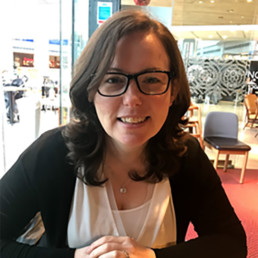
Written by Suzanne Wood
Chemistry teacher in an all girls school in London.
“Think of a scientist… imagine that scientist in your mind, imagine what they look like, what they do at work, the clothes they wear…. Now imagine them at home with their family, think about what their family looks like.”
I often start my year 7 and 8 classes with this exercise at the very beginning of the year. I ask them to draw a picture of the scientist and their family. Around 95% of them draw an old, white man with slightly fuzzy hair wearing a lab coat, his wife and their two children. It is always clear that the prevailing idea of scientists as straight, white men is still dominant in today’s society.
Looking at the numbers working in science careers, it is easy to see why. Despite there being over a million women working in science technology, engineering and maths (STEM) careers, this still represents only 24% of the work force1. More worryingly, black students represent only 6.2% of university entries on STEM courses2 and LGBT+ people are 20% less represented in STEM fields than expected3. The number of people with a known disability working in STEM subjects is far lower than those working in non STEM fields4. Yet, there remains a well documented skills shortage in this industry, costing around £1.5billion per year, coupled with a continued growth in jobs year on year5. It is clear therefore that the argument for the improved representation amongst minority groups in science is not just a moral one but also an economic one.
Discourse on diversifying the school curriculum frequently suggests that this is significantly more challenging for science or maths compared with English, history or the arts6. But as we know, you can’t be what you can’t see, and with this in mind, I personally took on the challenge of leading the science department to decolonise and diversify our curriculum. My aim was to reflect back to our students a vision of science that included them and their many and varied individualities. My project was ambitious, I created diversity resources for all three sciences across key stages 3 and 4 for each unit of learning. These were integrated into the existing curriculum for teachers to use. Examples include challenging our year 7’s perspective of families by exposing them to diverse ways of having children when studying reproduction, or introducing year 8 to Stephanie Kwolek, the woman who invented Kevlar when studying materials. We explore why female only pairings are beneficial to some species in GCSE Biology and the inequalities that exist as a result of climate change in GCSE Chemistry along the work of Stephen Hawking in GCSE Physics. We celebrate black history month in science with year 7 & 8 by looking at the life and contribution of Henrietta Lack’s HeLa Cells and in year 12 Chemistry and Biology we discover how the first HIV drugs were designed during LGBT+ history month. I found, when you scratch the scientific surface and get creative, you can quite easily find rich and varied examples of diversity and inclusion.
An added layer to this project was my realisation that we needed a significant and sustained culture shift within the department to put diversity and inclusion into the forefront of our teaching and learning strategy. I worked with teachers to help them understand the importance of their role in this by inviting them to attend a whole school CPD session that I ran on supporting LGBT+ students and why this was essential in terms of student wellbeing. I worked with the department to evolve the learning environment and make it more inclusive. Our science class names were changed to reflect a diverse group of scientists and time was built into our teaching schedules for diversity to be celebrated. These changes have had a significant impact on teachers and our students. A recent staff survey demonstrated that 100% of the respondents felt that diversity and inclusion is an important aspect of their teaching role and most teachers (90%) feel confident delivering this within the department. Student surveys have also revealed that pupils enjoyed learning about diverse science and that they saw this as an important aspect of their science education. Since these changes, staff have told me that students seem more at ease with starting conversations with them that have diversity and inclusion at their core and I see this as a positive outcome. Personally, the biggest change for me is that diversity and inclusion is now a collective effort for the entire department. It is no longer just me talking about this, but all of us.
- https://www.stemwomen.co.uk/blog/2021/01/women-in-stem-percentages-of-women-in-stem-statistics
- https://www.stemwomen.co.uk/blog/2021/03/bame-women-in-stem
- https://blogs.imperial.ac.uk/imperial-medicine/2019/02/27/stem-needs-to-face-up-to-its-problem-with-lgbt-diversity/
- https://royalsociety.org/-/media/policy/topics/diversity-in-science/210118-disability-STEM-data-for-students-and-staff-in-higher-education.pdf
- https://luminate.prospects.ac.uk/the-uks-stem-skills-shortage
- https://www.runnymedetrust.org/uploads/publications/pdfs/Runnymede%20Secondary%20Schools%20report%20FINAL.pdf

